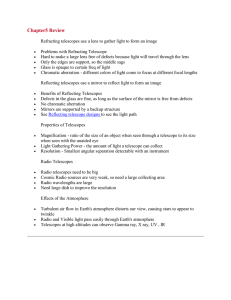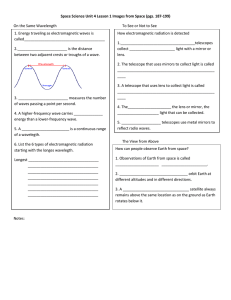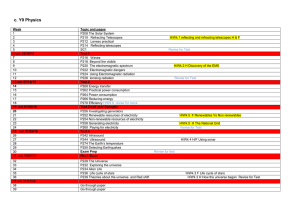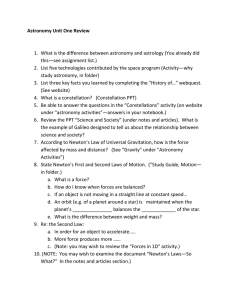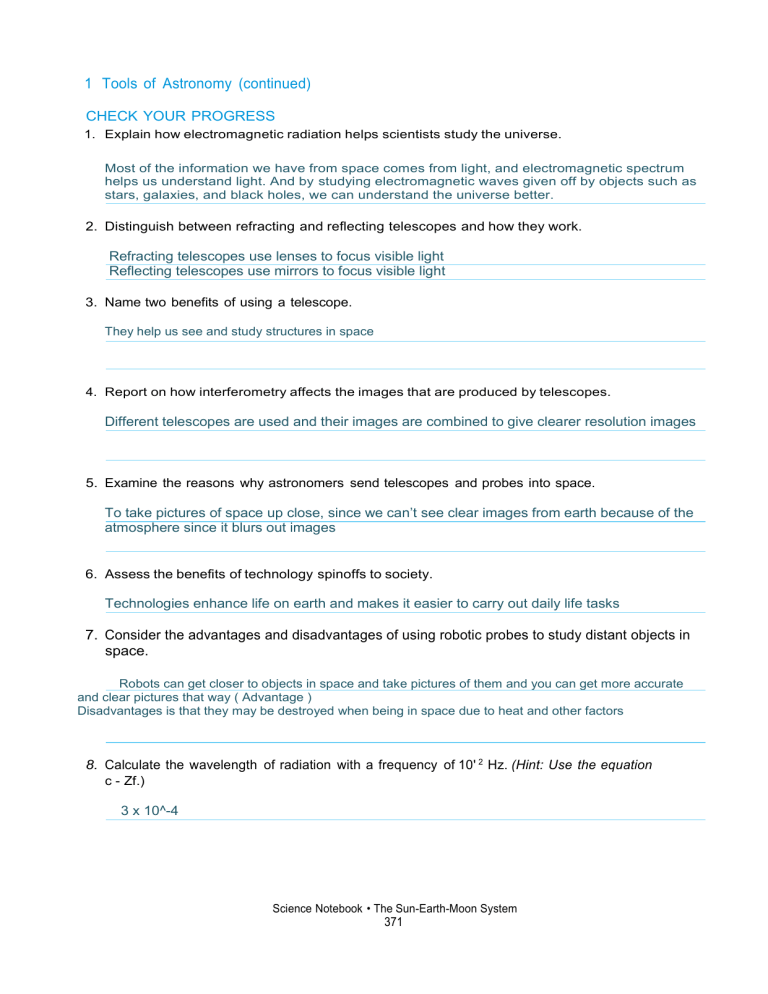
1 Tools of Astronomy (continued) CHECK YOUR PROGRESS 1. Explain how electromagnetic radiation helps scientists study the universe. Most of the information we have from space comes from light, and electromagnetic spectrum helps us understand light. And by studying electromagnetic waves given off by objects such as stars, galaxies, and black holes, we can understand the universe better. 2. Distinguish between refracting and reflecting telescopes and how they work. Refracting telescopes use lenses to focus visible light Reflecting telescopes use mirrors to focus visible light 3. Name two benefits of using a telescope. They help us see and study structures in space 4. Report on how interferometry affects the images that are produced by telescopes. Different telescopes are used and their images are combined to give clearer resolution images 5. Examine the reasons why astronomers send telescopes and probes into space. To take pictures of space up close, since we can’t see clear images from earth because of the atmosphere since it blurs out images 6. Assess the benefits of technology spinoffs to society. Technologies enhance life on earth and makes it easier to carry out daily life tasks 7. Consider the advantages and disadvantages of using robotic probes to study distant objects in space. Robots can get closer to objects in space and take pictures of them and you can get more accurate and clear pictures that way ( Advantage ) Disadvantages is that they may be destroyed when being in space due to heat and other factors 8. Calculate the wavelength of radiation with a frequency of 10' 2 Hz. (Hint: Use the equation c - Zf.) 3 x 10^-4 Science Notebook • The Sun-Earth-Moon System 371
